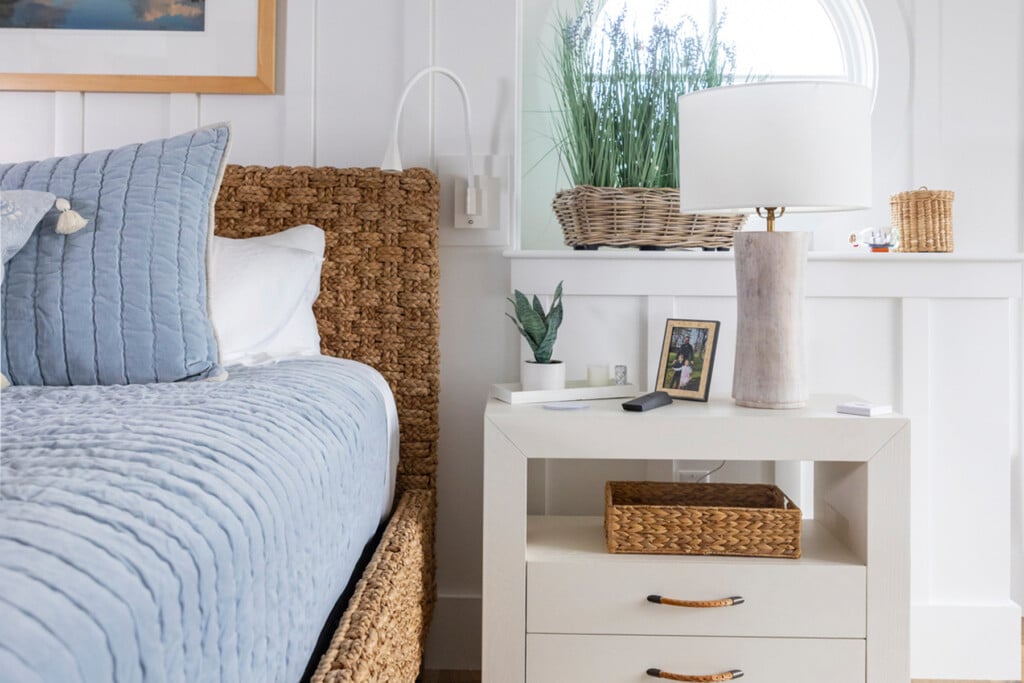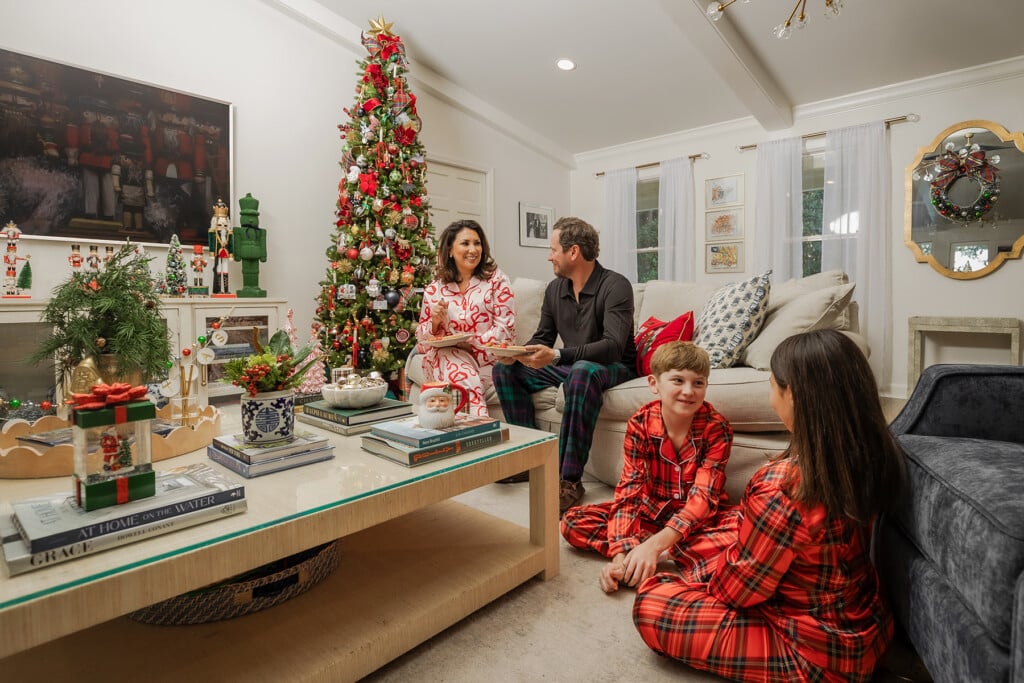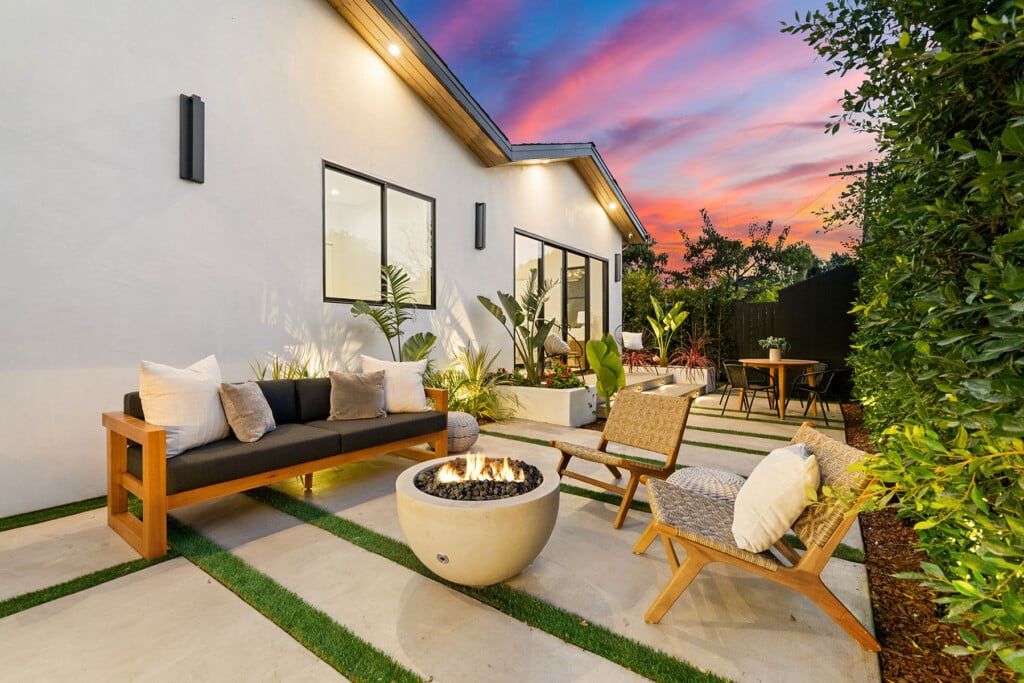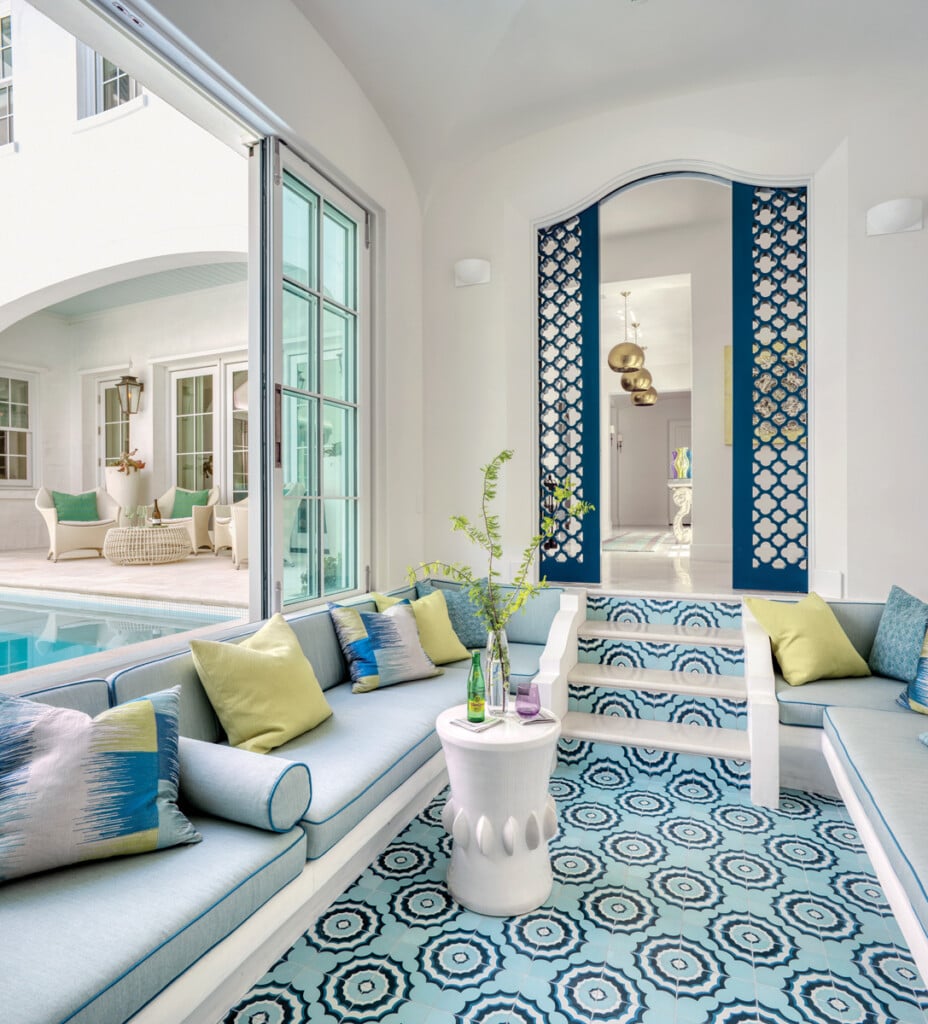Defining Coastal Chic
A closer look at the beach’s elevated, modern design style

A new-age design descriptor, the coastal chic aesthetic focuses on bringing the beauty of nature inside to create luxurious and calming spaces. The style departs from the bold colors and nautical motifs known to the condo aesthetic. Subtle, warm modernity is welcome, but subdued gray hues and chrome accents are forgotten.
In their place, a softer, more refined coastal style emerges, characterized by muted, earthy tones, rich textures, and warm gold accents.
According to designer Risa Priestley of Risa’s Interiors in Miramar Beach, “Bright colors aren’t in demand anymore. People want a sleek, modern style that feels laid-back and comfortable.”
While classic white used to be a coastal basic, designers like Priestley are embracing richer alternatives like creamy oatmeal tones, neutral greens, and light shell hues.
Warm olive green and gold hues reminiscent of the 1970s are making a comeback, Priestley says, but in subtle, natural shades that leave drab behind. Today’s approach combines these nostalgic colors with layered, organic textures and patterns and steps away from outdated prints of palms and florals.
A broader color palette of soft blues, watery greens, muted corals, and sandy neutrals complements other design elements. Designers increasingly use jute, grass cloth, natural stone, warm woods, and crisp linens to add dimension and authenticity to spaces, from bathrooms to bedrooms and living rooms. Changing up even a few design elements can make all the difference.
“I love green,” says Trisha Henry, owner and lead designer of The Henry Haus in Miramar Beach. “I incorporate it often because I believe that a pop of color, whether through a throw pillow or an accessory like a unique vintage vase, adds character to the space. Even marble is returning, but this time with intricate mosaic patterns that add subtle drama and visual interest.”
Design details are shifting, too.
“We went through a phase of oversized tiles and minimal grout lines,” Henry notes. “Now we are accentuating grout lines as part of the design.”
She points to the emerging trend “color drenching,” where walls, ceilings, and trim are all painted the same color. Depending on the hue, this technique can make a room feel larger or more intimate. Originally seen in whites and beiges, this approach has ventured to use soft greens, muted blues, and deeper tones.
Even wallpaper, long considered passé, is making a comeback. However, patterns are now more understated and coastal inspired, making rooms feel fresh and inviting rather than closed in and claustrophobic.
“In all these cases, you don’t need all the elements to be new,” Henry says. “I love to mix old and new because it makes a space feel cozy, not bland and sterile.”
Priestley agrees, especially when the coastal chic design is applied to vacation rentals.
“Most people book rentals online, so they are drawn to spaces with a clean, appealing vibe,” she says. “To get the best rentals, people want upgraded units, or they’ll choose someone else. Durability is key in rental spaces, so we use great fade-resistant fabrics, furniture, and materials that hold up well to constant use without sacrificing style.”
“You can take an affordable tile and lay it in a creative pattern to give the space real visual impact and have it photograph well,” Henry adds. “Not everything has to be white and breezy. A little contrast goes a long way.”
The best characteristic of coastal chic, Priestley and Henry agree, is that you can create an elevated look without breaking the bank. With a bit of imagination and intentional selections, this modern yet timeless style can be replicated in any space.




